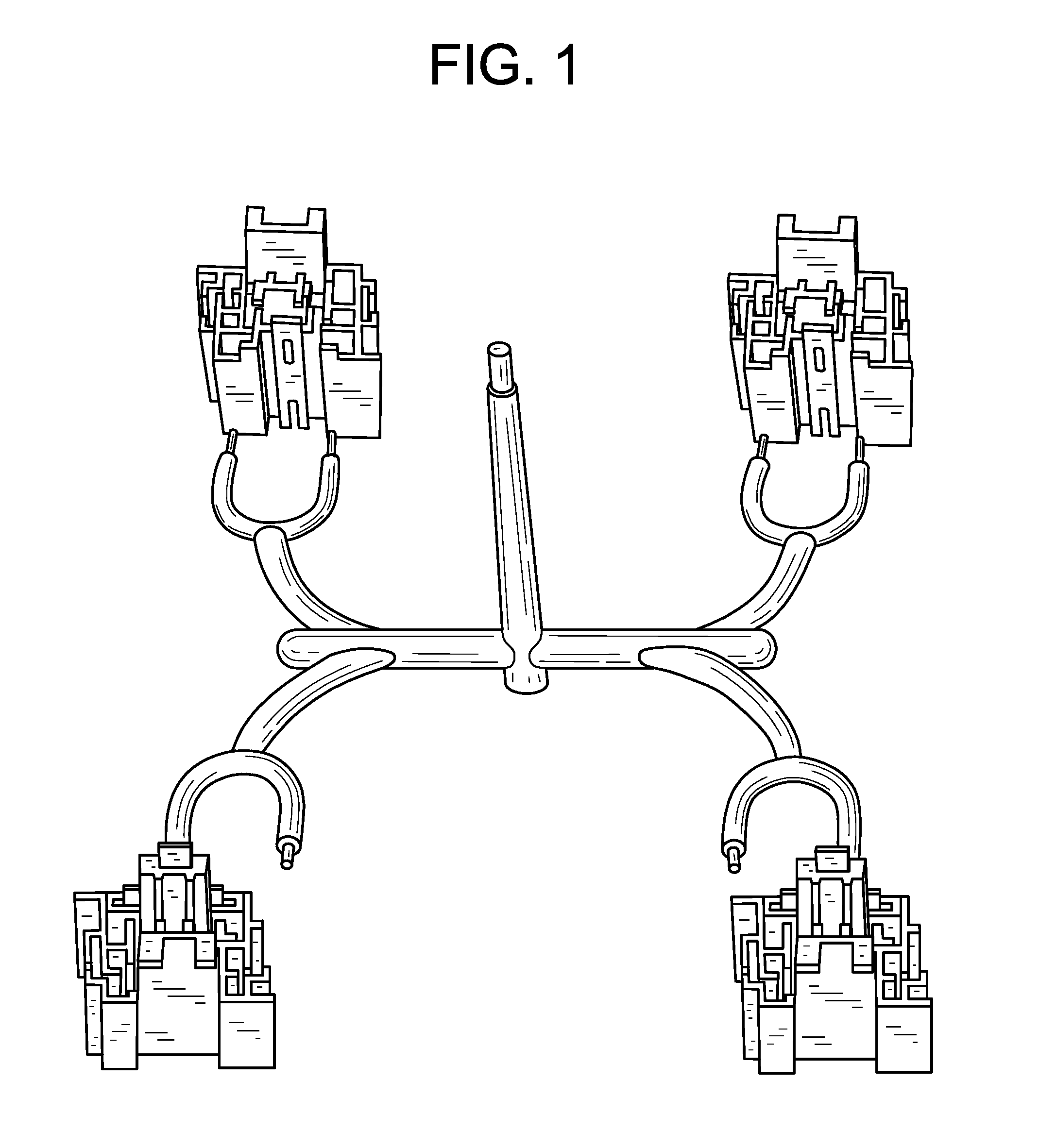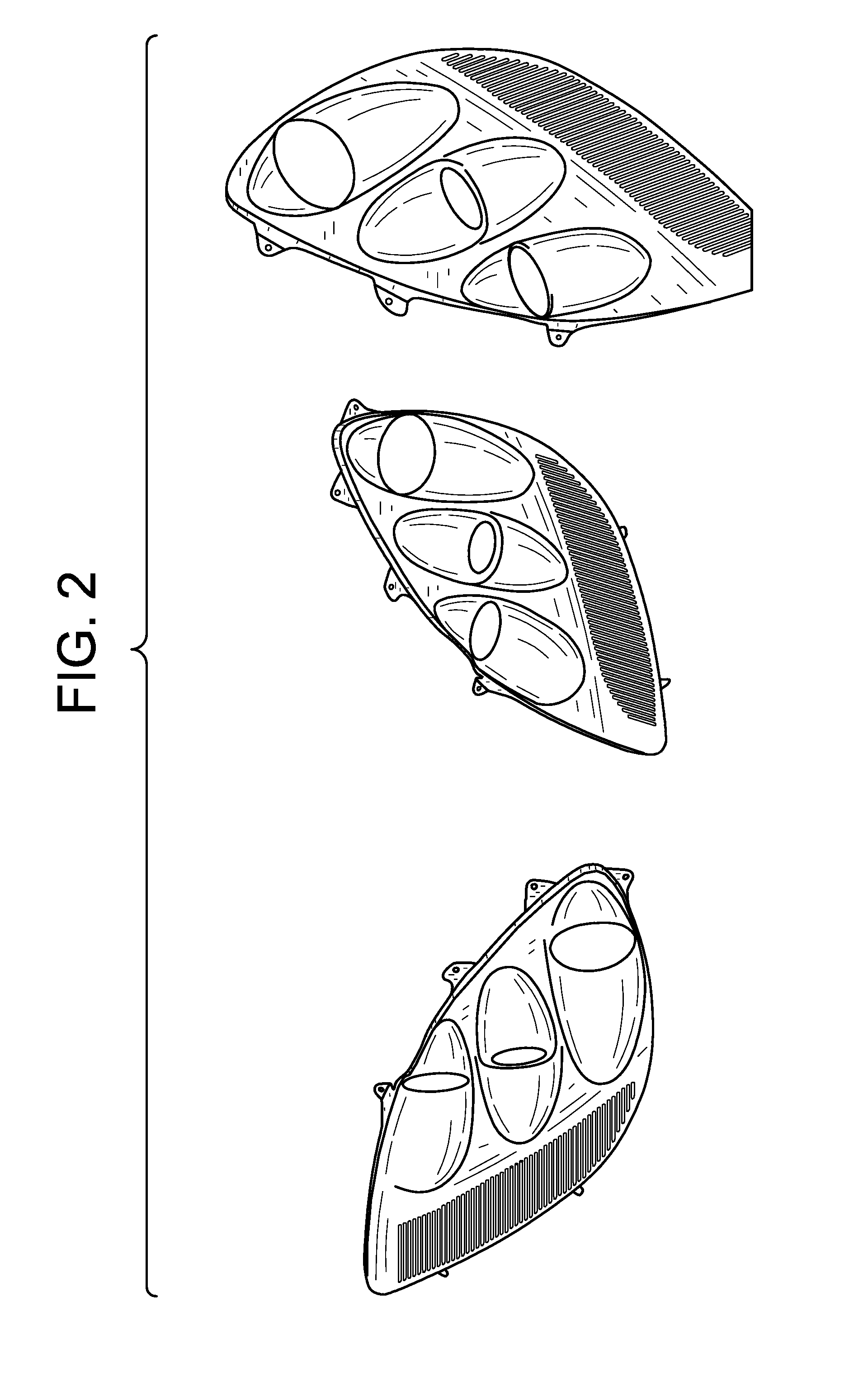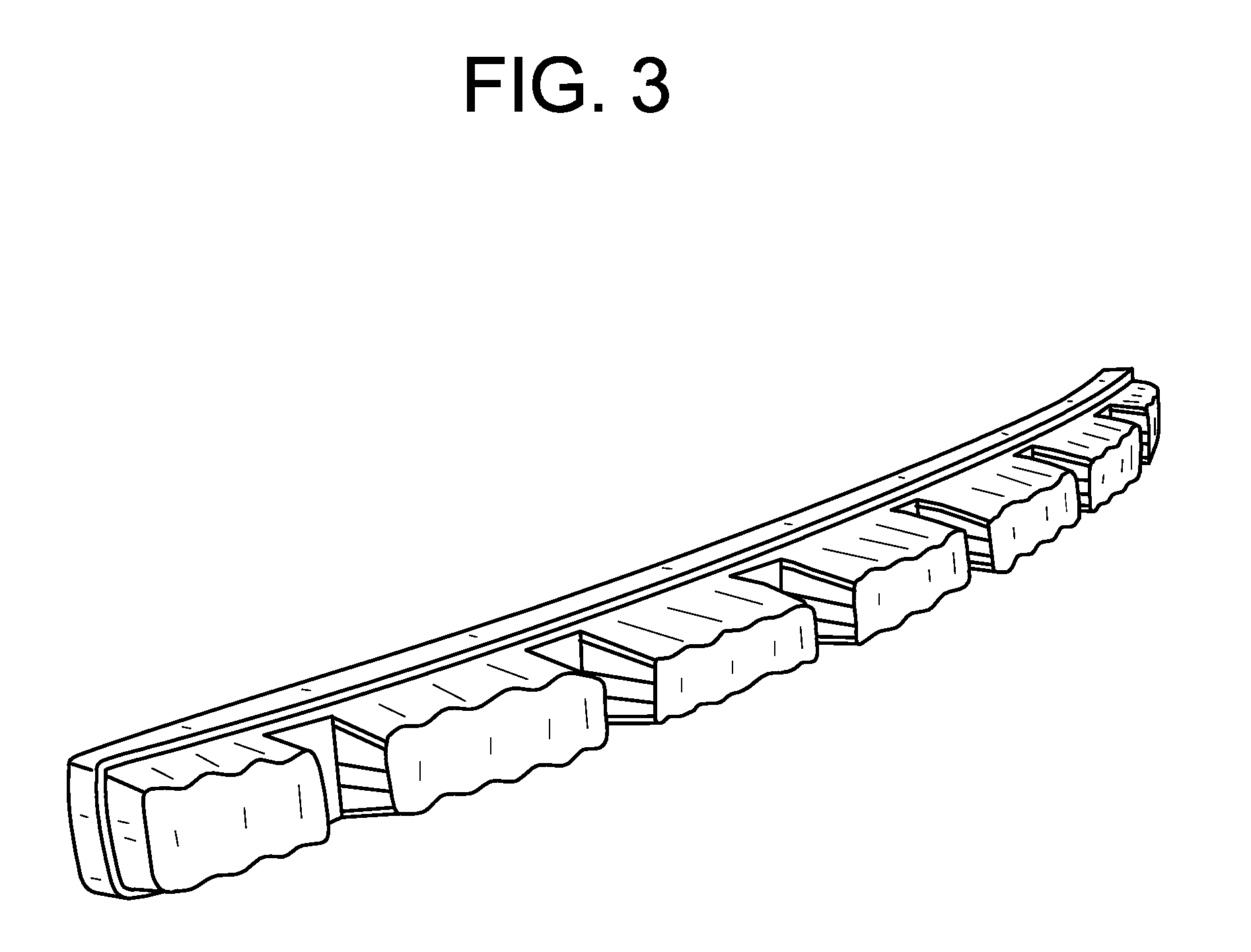Articles derived from compositions containing modified polybutylene terephthalate (PBT) random copolymers derived from polyethylene terephthalate (PET)
a technology of polyethylene terephthalate and polybutylene terephthalate, which is applied in the directions of yarn, dyeing process, transportation and packaging, etc., can solve the problems of significant waste of pet, significant resource that could be used more effectively, and incineration of pet, etc., and achieves the effect of useful performance properties
- Summary
- Abstract
- Description
- Claims
- Application Information
AI Technical Summary
Benefits of technology
Problems solved by technology
Method used
Image
Examples
examples 1-12
Overview
[0257] In these Examples, various articles were made from molding compositions as indicated below. Articles were made from both virgin, monomer-based polybuytlene terephthalate and polybuytlene terephthalate containing polyethylene terephthalate residues (derived from polyethylene terephthalate).
Materials
[0258] The following table gives a list of the ingredients used in the examples of the inventions.
AbbreviationDescriptionPET Derived PBT, (0.66Poly(1,4-butylene terephthalate) derived from PET, intrinsic viscosity of 0.66 cm3 / g as measured in aiv)60:40 phenol / tetrachloroethane mixturePET Derived PBT, (1.2 iv)Poly(1,4-butylene terephthalate) derived from PET,, intrinsic viscosity of 1.2 cm3 / g as measured in a60:40 phenol / tetrachloroethane mixture.GE PBT 195 (0.66 iv)Poly(1,4-butylene terephthalate) from General Electric Company, intrinsic viscosity of 0.66 cm3 / g asmeasured in a 60:40 phenol / tetrachloroethane mixtureGE PBT 315 (1.2 iv)Poly(1,4-butylene terephthalate) from...
example 1
[0265] A modified polybutylene terephthalate random copolymer was derived from polyethylene terephthalate as follows. Clear PET bottle scrap was obtained from a commercial source. In the scrap cleaning process, the PET scrap was cleaned manually involving first a hot water wash followed by manual sorting to separate colored bottles and PVC bottles, crushing, hydrofloatation to separate PP, labels, caps etc., alkali wash to remove glue, and finally a demineralized water wash to remove alkali followed by drying. The resulting PET flakes were used as the main raw material in the depolymerization step. The post consumer recycle PET flakes had an iv specification of 0.68 to 0.78 dl / g and a melting point specification of 245 to 255 C. The PVC content was less than 10 ppm by specification. The butanediol was obtained from BASF and had a purity specification of >99.5 wt. %. The ethylene glycol was obtained from Merck and had a purity specification of >99.5 wt. %. The TPT catalyst used was t...
examples 2-3
[0272] In these Examples, a talc filled composition was made with a polybutylene terephthalate copolymer derived from polyethylene terephthalate (as prepared in accordance to Example 1) and polybutylene terephthalate derived from monomers.
Materials
[0273] Table 4 shows the ingredients and concentrations used. All compositions are in weight %.
TABLE 43DescriptionUnit2(Comparative)PET Derived PBT (0.66%41.16iv)PET Derived PBT (1.2 iv)%17.5GE PBT 315 (0.66 iv)%41.16GE PBT 195 (1.2 iv)%17.5Talc%2020Low-IV, Fast-%2020Crystallizing PETHindered Phenol%0.040.04StabilizerSAPP-Technical-Food%0.10.1GradeAlkane SO3Na Antistatic%11PelletPentaerythritol%0.20.2Tetrastearate
Composition Preparation Procedure
[0274] The ingredients of the examples shown below in the indicated tables were extruded on a 40 mm Werner Pfleiderer Twin Screw Extruder with a vacuum vented mixing screw, at a barrel and die head temperature between 240 and 265 degrees C. and 150 to 300 rpm screw speed. The extruder had 8 ...
PUM
| Property | Measurement | Unit |
|---|---|---|
| Thickness | aaaaa | aaaaa |
| Thickness | aaaaa | aaaaa |
| Diameter | aaaaa | aaaaa |
Abstract
Description
Claims
Application Information
 Login to View More
Login to View More - R&D
- Intellectual Property
- Life Sciences
- Materials
- Tech Scout
- Unparalleled Data Quality
- Higher Quality Content
- 60% Fewer Hallucinations
Browse by: Latest US Patents, China's latest patents, Technical Efficacy Thesaurus, Application Domain, Technology Topic, Popular Technical Reports.
© 2025 PatSnap. All rights reserved.Legal|Privacy policy|Modern Slavery Act Transparency Statement|Sitemap|About US| Contact US: help@patsnap.com



